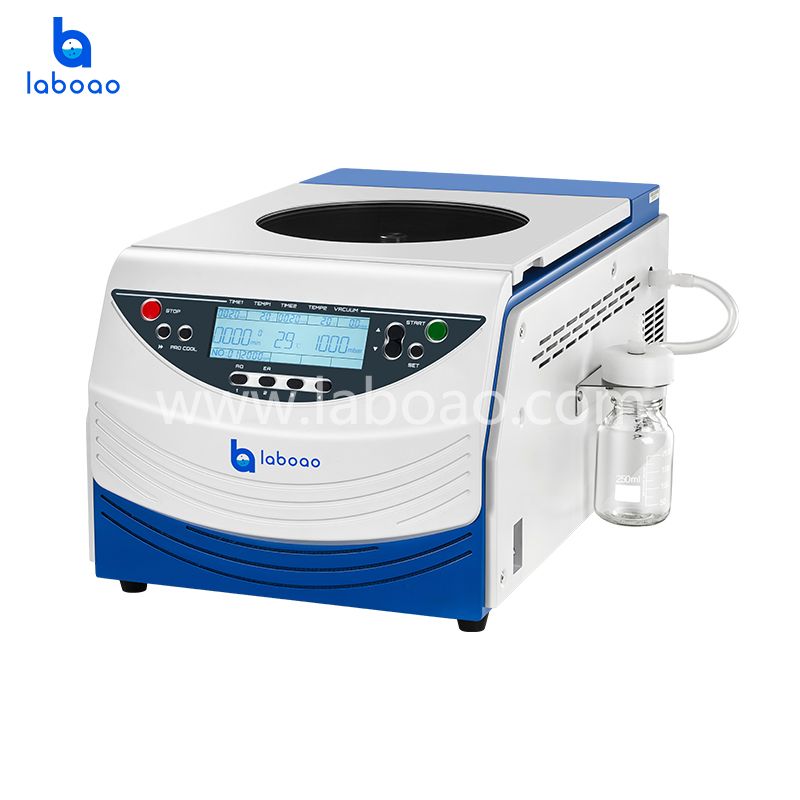1. Comparison of the Principles of Three Concentration Technologies
Choosing a concentration technology requires first understanding its working principle. Each technology has its own unique physical principles and application characteristics.
A rotary evaporator lowers the boiling point of a liquid through reduced pressure distillation. This allows substances that would decompose, oxidize, or polymerize under atmospheric pressure before reaching their boiling point to be distilled out before they decompose. Its "rotating" design creates a thin film of solvent, increasing the evaporation area and improving evaporation efficiency.
A nitrogen purge system uses a method of rapidly, continuously, and controllably blowing nitrogen gas onto the surface of a heated sample to rapidly evaporate and separate the water in the sample, achieving oxygen-free concentration.2 This method relies on a combination of inert gas purging and heating.
A vacuum centrifugal concentrator uses centrifugal force, heat, and a vacuum provided by an external vacuum pump to evaporate the solvent. The vacuum lowers the boiling point of the solvent, the centrifugal force ensures that the sample settles at the bottom of the tube, and a cold trap captures the evaporated gas.
2. Advantages in Processing Sensitive Biological Samples
For sensitive biological samples such as nucleic acids and proteins, vacuum centrifugal concentration technology demonstrates significant advantages and has become the preferred method for many laboratories.
Cryogenic concentration is one of the core advantages of vacuum centrifugal concentrators, effectively preventing sample loss, denaturation, decreased activity, and oxidation. This is crucial for preserving the natural state and activity of biological samples.
Vacuum centrifugal concentrators offer high throughput, enabling simultaneous processing of dozens of samples, significantly improving experimental efficiency. Our centrifugal concentrators can process up to 300 1.5ml samples simultaneously in a single run.
Another key advantage is the lack of cross-contamination. The centrifugal force ensures that samples settle to the bottom of the tube, eliminating bubbles and cross-contamination. This is crucial for ensuring accurate experimental results.
Vacuum centrifugal concentrators also achieve foam-free and sample loss-free processing, significantly improving sample recovery, which is particularly important for precious samples.
3. Comparative Analysis with Traditional Methods
Compared to traditional concentration methods, vacuum centrifugal concentration technology demonstrates advantages in multiple aspects.
Rotary evaporators have significant limitations: they can only process single samples, require cleaning of the glassware, have limited seal lifespans requiring regular replacement, and can leak into the air, causing contamination. These drawbacks are particularly pronounced when processing biologically sensitive samples.
Nitrogen purging devices present even more serious challenges: they are not only suitable for concentrating low-boiling-point solvents, but also pose a significant environmental risk. Organic solvents volatilized from the test tubes by nitrogen purges are released directly into the surrounding environment without any treatment. These solvents are often strong acids, bases, and highly corrosive substances.
Vacuum centrifugal concentrators offer a safer operating environment and a more environmentally friendly solvent recovery method. Optional cold traps effectively capture most solvent vapors that could damage the vacuum pump, effectively protecting the high-vacuum oil pump while preventing the direct release of hazardous solvents into the environment.
4. Technical Features and Performance Analysis
The technical features of the vacuum centrifuge concentrator determine its superior performance in processing sensitive biological samples.
Precise control is a key feature of modern vacuum centrifuge concentrators. High-precision temperature control technology enables gradient temperature control, ensuring heat replenishment during the evaporation process. Adjustable vacuum level, speed, temperature, and time provide high experimental flexibility.
Corrosion-resistant design is crucial for long-term reliability. The centrifuge chamber is constructed of alloy aluminum, and the anodic electrophoretic surface treatment resists corrosion from most chemical reagents and solvents. A Teflon anti-corrosion coating is available to effectively protect against corrosion from solutions such as HCl, TFA, DMSO, and acetonitrile.
Automated operation enhances experimental reproducibility and convenience. Intelligent microprocessor control and a simple, intuitive user interface, including fully automated programs with one-click activation, significantly reduce operator workload.
5. Application Scenarios and Typical Case Studies
Vacuum centrifugal concentrators demonstrate their unique value in a variety of applications, particularly in the following areas:
Sample preparation prior to mass spectrometry is a key application area for vacuum centrifugal concentrators. Mass spectrometry is a crucial tool for protein analysis, and both colloidal and solution protein samples require lyophilization or concentration during sample pretreatment.
This also applies to the concentration of DNA, RNA, and peptides. In transfection experiments, achieving high transfection efficiency often requires a certain substrate concentration. If the extracted substrate concentration is low, centrifugal concentration is a simple, fast, and safe method.
Clinical specimen concentration is also an application area for vacuum centrifugal concentrators. Furthermore, they are widely used in organic solvent extraction, chromatography, HPLC sample recovery, and soil and seed solution concentration.
